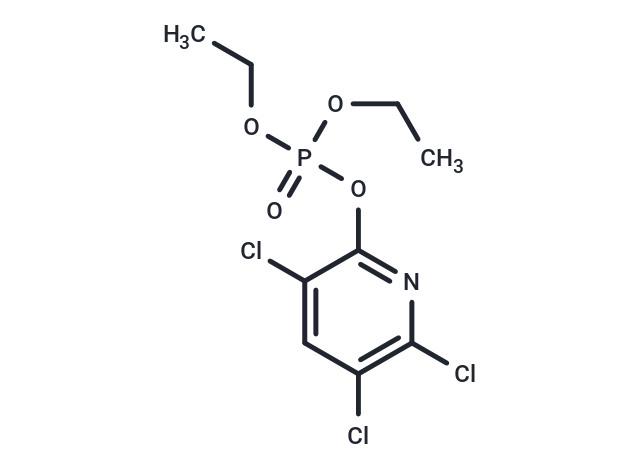Shopping Cart
- Remove All
 Your shopping cart is currently empty
Your shopping cart is currently empty

Chlorpyrifos-oxon, an active metabolite of Chlorpyrifos, is a potent phosphorylating agent that significantly inhibits AChE activity and induces cross-linking between tubulin subunits, thereby disrupting microtubule function [4].

| Pack Size | Price | Availability | Quantity |
|---|---|---|---|
| 1 mg | $60 | 6-8 weeks | |
| 5 mg | $130 | 6-8 weeks | |
| 10 mg | $195 | 6-8 weeks | |
| 25 mg | $330 | 6-8 weeks | |
| 50 mg | $495 | 6-8 weeks | |
| 100 mg | $740 | 6-8 weeks |
| Description | Chlorpyrifos-oxon, an active metabolite of Chlorpyrifos, is a potent phosphorylating agent that significantly inhibits AChE activity and induces cross-linking between tubulin subunits, thereby disrupting microtubule function [4]. |
| In vitro | Treatment with 1.5 mM Chlorpyrifos-oxon (CPO) induces aggregation in tubulin proteins. Remarkably, at a concentration as low as 1.5 μM, Chlorpyrifos-oxon still facilitates the formation of cross-linked trimers. This compound enhances the cross-linking of tubulin monomers through isopeptide bonds, resulting in the formation of multimers[2]. In the context of cultured PC12 cells, exposure to Chlorpyrifos at a concentration 10 times lower than that required to inhibit acetylcholinesterase (AChE) activity (3.0 μM) adversely affects neurite outgrowth. Conversely, Chlorpyrifos-oxon exhibits its inhibitory effect on neurite extension at an even lower concentration of 1.0 nM[3]. |
| In vivo | Chlorpyrifos-oxon (CPO) undergoes rapid detoxification in human liver microsomes through CYP-dependent deethylation and dearylation, as well as glutathione-S-transferase activity. Additionally, it is efficiently degraded or scavenged by liver enzymes, including A-esterases like paraoxonase 1 (PON 1) and B-esterases such as carboxylesterase and butyrylcholinesterase (BChE). Moreover, when wild-type mice are treated with Chlorpyrifos-oxon (3 mg/kg, ip; once), it significantly affects microtubule integrity, reducing their size to approximately 60% compared to those in control mice, indicating altered amino acid covalency and compromised microtubule structure, which suggests a disruption of their function[1][4]. |
| Molecular Weight | 334.52 |
| Formula | C9H11Cl3NO4P |
| Cas No. | 5598-15-2 |
| Storage | Powder: -20°C for 3 years | In solvent: -80°C for 1 year | Shipping with blue ice. |

Copyright © 2015-2025 TargetMol Chemicals Inc. All Rights Reserved.